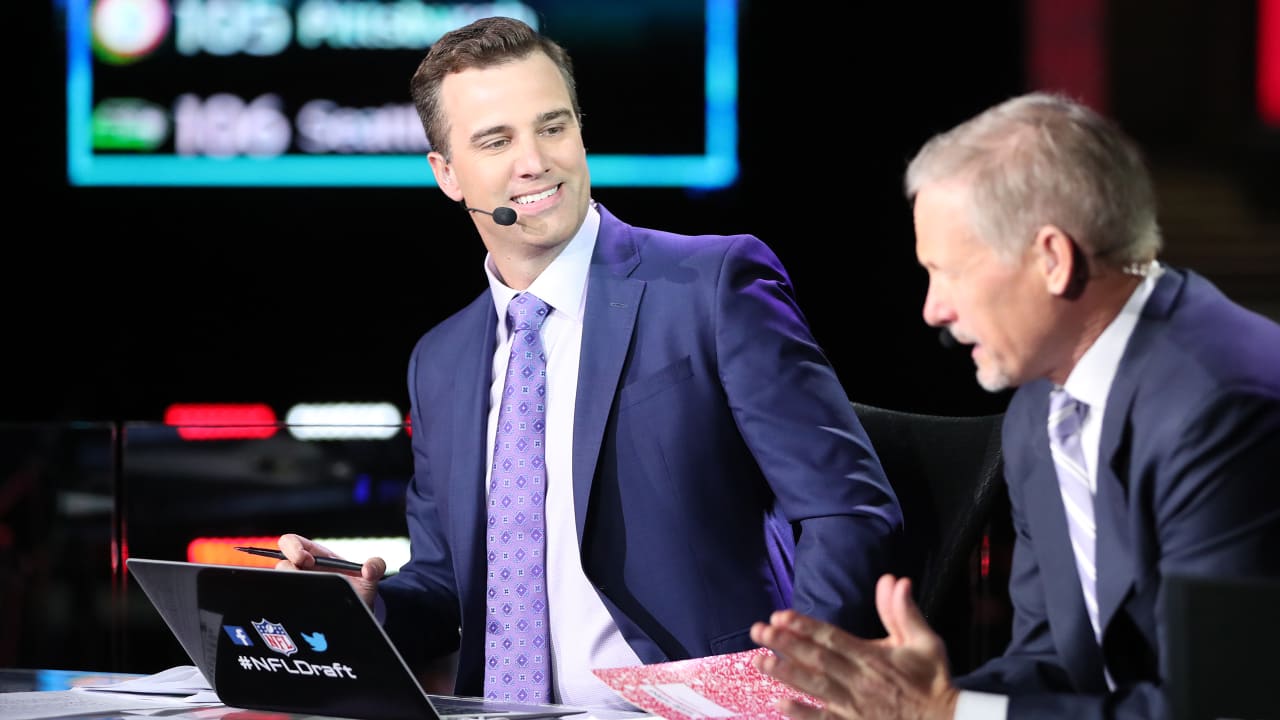Viktor
Well-known member
- Mar 19, 2019
- 2,552
- 0

2. Weighing combine performances fairly
In 2018, tackle Orlando Brown drew lots of attention at the combine but for all the wrong reasons.
Brown put a poor workout on tape in Indianapolis and ended up falling to the third round. Since being drafted by Baltimore, the former Oklahoma lineman has played in all 32 games and started 26 of them.
So then, how much stock should be put into combine workouts when determining where a player lands on a team's draft board?
"I think it's important — and good teams do this — to get your boards set before the combine as far as an anchoring effect," Jeremiah said. "Once you have the board up, then maybe you can split some ties at the combine? It's a good way to do it if you have the same grade and guys are clumped together; the combine can be a good tiebreaker and factor in the workout."
Jeremiah opined that Brown was "punished way too much" for his combine performance and used that situation as an example. .
"The [college] tape was so good. Where he came into the combine and where he ended up was way too much of a drop," Jeremiah explained. "That's a great example of a warning sign for teams to not stray too much from your initial board once you get it up.
"I think when you get to the combine, there are certain positions that hold more weight for workouts – and that, to me, are the corners," he added. "You have to be able to run at that position, you just have to. That, to me, has a pretty drastic impact on your draft stock — if you're playing that position and then determining how you run. But put more emphasis on the interviews — rely on the tape, get to know the kid and use these workouts to split ties. I think that's the best way to go about it."
3. Acknowledging importance of offensive line focus
The Vikings over the past three drafts have used early round draft picks to add to their offensive line.
After selecting Pat Elflein in the third round in 2017, Minnesota snagged Brian O'Neill in the second round in 2018 and used its first-round pick on Garrett Bradbury last April.
The Vikings also in 2017 signed left tackle Riley Reiff as a free agent.
Jeremiah acknowledged the importance of teams focusing on their offensive line, whether through the draft or in free agency.
"Teams with good offensive lines, you've got a high floor every year. They're going to keep you competitive, and it's going to give you a chance to win each and every week," Jeremiah said. "I don't know that offensive line's every been more important than it is right now. When you look at the investment that these playoff teams, what they've done in the offensive line, it sticks out.
"You'd better invest," he added. "That's with high picks, that's with free agents, but you need to take care of your offensive line."
_4. Receivers lead position depth_
According to Jeremiah, the wide receiver and cornerback groups are the deepest of the positions in this year's draft.
He called the receiver group "as deep as I've seen."
"I've got 27 wide receivers with top-3 round grades in this draft. And consider, an average 31 are taken," Jeremiah said. "We had [34 taken in 2018]. This is a really phenomenal group of wideouts. And not all of those guys are going to go early – they're going to end up spreading throughout the draft – but it's going to be a deep group."
He added the following evaluation of depth at other positions:
"Really good at corner, really good at running back. And then when you look at some positions maybe not as deep – tight end, edge rusher and linebacker – just a little bit of a shallow group there."
